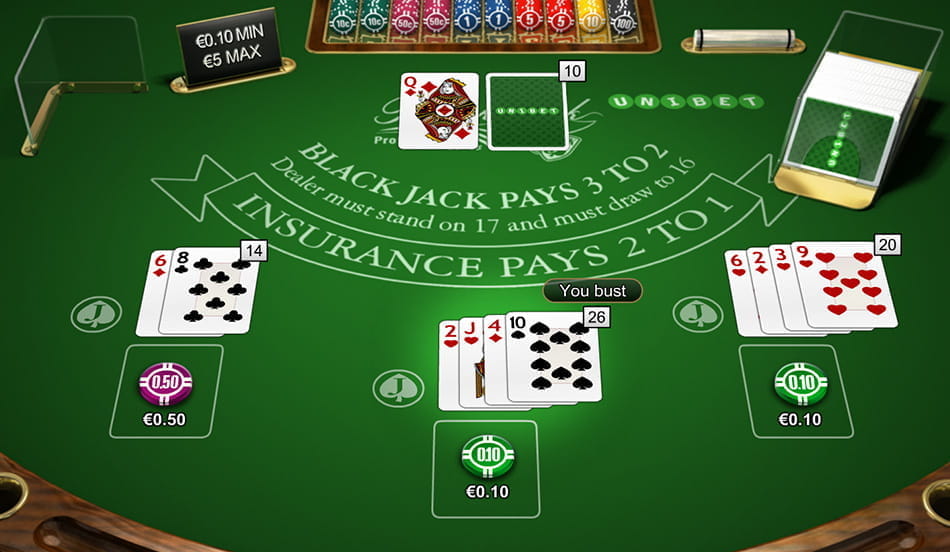3 Blackjack Strategies That You Should Avoid Online
Posted by Harry Kane on Monday, January 9, 2017
The transition between online and offline gaming has been rapid, with many players looking to shift from bricks-and-mortar casinos to virtual outlets. The issue with this, however, is that we are seeing a number of traditional gameplay strategies replicated online, with a number of players translating these directly without making any account for their change in platform.

This is particularly true in the world of blackjack, where there are a number of strategies that can be damaging to a players chances of success in the virtual world. With this in mind, here are three of the most damaging blackjack systems that should be avoided when playing online:
1. The ‘Never Bust’ Strategy
Clearly the house has an edge across both off and online blackjack platforms, as players are required to draw first and can bust regardless of whether or not the dealer follows suit during the same hand. This is the basic premise of the ‘never bust’ strategy, which requires players to adopt the simple approach of never hitting a hard hand of 12 or more. This instantly eliminates the 28% probability of busting during a hand, and goes some way to reducing the theoretical blackjack house edge of 8%.
Overall, this strategy lowers the house edge to 3.91%, but this is still far higher than games such as European roulette. It is also less effective than more complex and far reaching strategies, so you should probably avoid this if you intend to win consistently over time.
2. The ‘Mimic the Dealer’ Strategy
While mimicking the dealer may sound like a cruel thing to do, this refers to the strategy of adhering to the rules of house when playing a hand. When adopting a classic, mimicking strategy, a player would typically hit a hand of 16 or less and stand on one of 17 or more. This replicates a popular dealer rule, and one that allows gamblers to take a reactionary approach to playing the hand that they hold. Similarly, the player in question would also refrain from doubling or splitting their hand, as dealers are typically not allowed to do this.
The aim of this strategy is to negate the house edge and enable players to take advantage of drawing first, and while this works in theory it places considerable restrictions on gamblers and often prevents them from optimising each individual hand.
So despite minimising losses in some instances, on average this strategy results in a less than favourable house edge of 5.48%. This is even higher than our first example, so it should be avoided both on and offline.
3. The ‘Hit your hand on 16’ strategy
We have already touched on the dangers of adhering to a rigid, reactionary blackjack strategy rather than playing the precise hand that your dealt. Such perils are evident through another age-old system of play, which encourages players to always hit their hand on 16 and pursue a higher value (at least in games where surrender is not an option). According the basic theory, this move will optimise your winnings by between 0.5% and 1% over the course of an average playing session.
While this strategy has some basis in logic and common sense, however, the composition of your hand can have a significant bearing on its impact. If you have a two card hand (in the form of a 10-6 or a 9-7), for example, hitting is a viable and calculated risk as you have a far greater statistical chance of drawing a lower value card next time out. In this respect, the strategy is effective and can deliver a hand capable of carrying the day.
The same cannot be said for a three-card 16, however, which would typically include 4,5 and 7. With three relatively low value cards already drawn, you have a far higher chance of busting your hand or being beaten by the dealer on the next move. In this respect, you would statistically be far better served by standing on 16, as this will increase your chances of winning in such an instance.